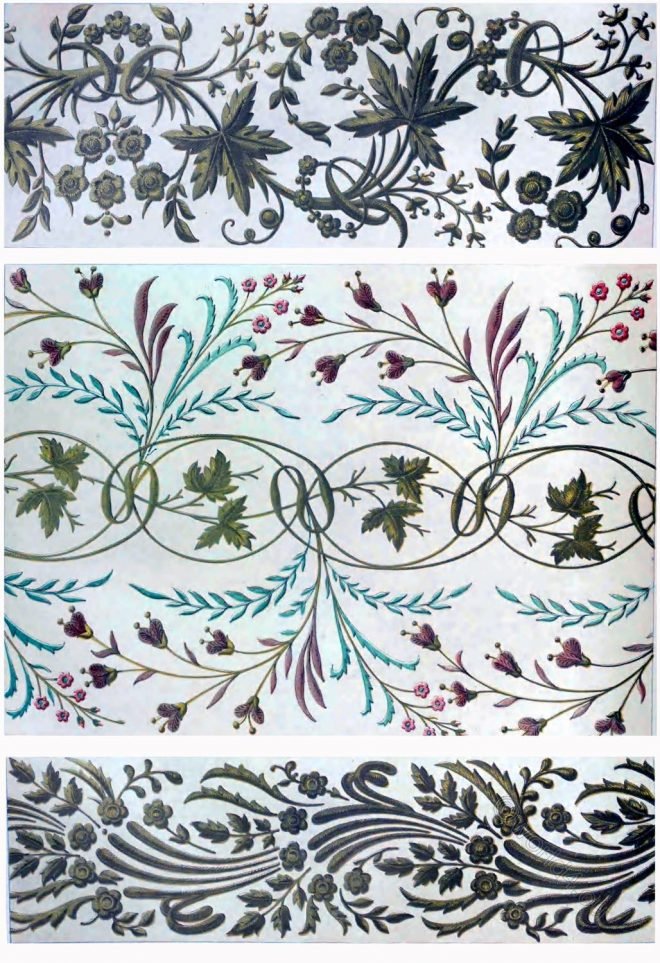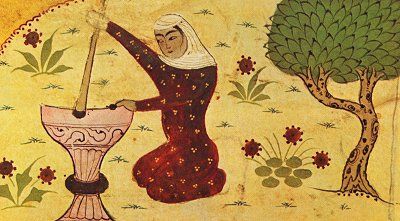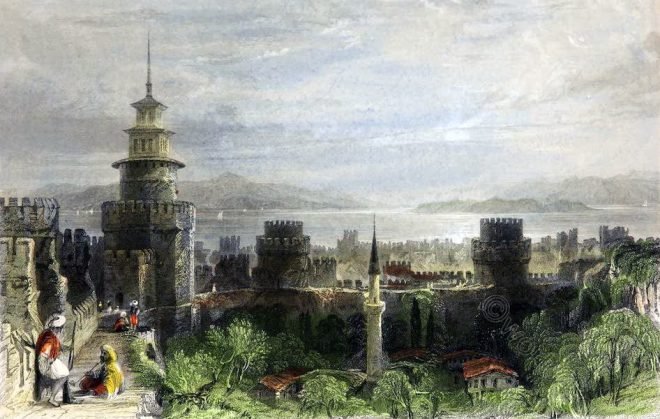Caravansaries are public edifices established in almost every town and village throughout the Turkish empire
Category: Ottoman Empire
Ottoman Empire Costumes. Traditional Ottoman Folk Costumes, The Janissaries uniforms, Turkish Sultans. Turkish Military Costumes. Traditional Turkish Men`s and women`s dresses.
Specimens of Turkish embroidery. The silk goods of Turkey.
Sir Matthew Digby Wyatt (1820-1877) – Specimens of Turkish Embroidery – from the Industrial Arts of the Nineteenth Century (1851-1853).
Yerebatan Serail – The Subterranean Palace. Basilica Cistern, Istanbul.
Constantinople and its environs. The “Subterranean Palace” still remains a cistern filled with water.
Women Mystics of the Dervish Orders. Female muslim Sufi saints.
Women Mystics by Lucy Mary Jane Garnett. Sisterhood of Mystics. Female muslim Sufi saints. The holy women of the Dervish Orders.
Ottoman Mosque of Shah-za-deh Djamesi (Sehzade), Constantinople.
Street market with fruit and vegetable vendors and supervisors. The Sehzade Mosque in Instanbul in the background.
Prison of the Seven Towers. Yedikule Fortress.
The Prison of the Seven Towers. Yedikule Fortress or Dungeons of the Seven Towers in Istanbul, former Constantinople.
The Dervishes of the various Orders. Islamic mysticism.
The religious doctrines, monastic organisation, and ecstatic powers of the dervish orders.
Pera. A quarter of the great suburb of Constantinople.
Pera was the name of a district of Constantinople, or more properly a quarter of the great suburb of Galata located north of the Golden Horn.
The Sultan Ahmed Mosque in Istanbul. Known as the Blue Mosque.
The Sultan Ahmed Mosque in Istanbul, built by Sinan’s pupil Mehmet Ağa, is a major work of Ottoman architecture.
The Süleymaniye Mosque in Istanbul of Sultan Suleyman the Magnificent.
The Süleymaniye Mosque (Turkish: Süleymaniye Camii) is one of the great mosques in İstanbul. It was built by order of Sultan Suleyman the Magnificent in a very short construction period between the years 1550 and 1557 and is an important work of the architect Sinan.










